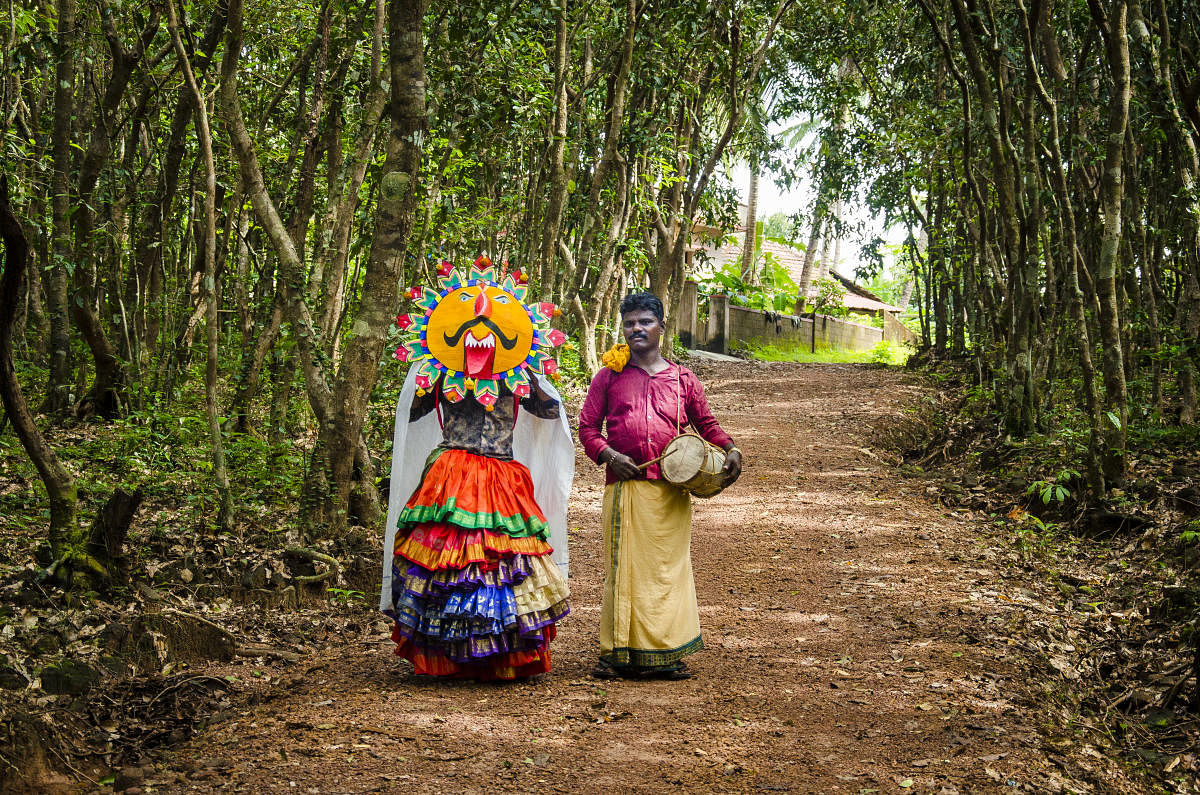
India lives in her villages and their traditions. Occupying a prominent place here is the Mahakaali Kunita or Mankaali Dance of Tulunadu.
During Deepavali, a performing duo is seen visiting every house of the chosen village.
There’s a dancer in an elaborate costume, similar to bhootakola, but with fewer embellishments; and a singer (man or woman) who carries a drum-like percussion called thembare and goes at paddanas or Tulu folk songs.
The dancer drapes sarees in frills waist-down and wears a loud pair of bronze anklets over a protective patch of arecanut leaves, meant to herald his arrival and help him sync with the song.
Colourful facade
The central identity of Mahakaali is the large mask, at least four times the size of human face, the dancer wears. It’s made of arecanut sheaths and gets a white-cloth coating on the other side.
Thus the duo begins. The singer creates a rhythm to which the dancer moves; his steps resemble a rather hap-hazard walk in circles as he keeps the mask in place using his hands. The dance goes on for 10-15 minutes, and is symbolic of replacing the evil with the good in the house.
What does the mask represent? The mask is yellow in colour with the face of Mahakaali painted on it. It has outlined, floral-shaped eyes, a monstrous protruding tongue, and a dark moustache.
The mask symbolises a deity that is ferocious, but not intimidating.
In Tulunadu, Mahakaali the guardian spirit is understood in different forms. Here, she is a Dravidian concept and has no connection to Goddess Mahakaali. Mahakaali Abbe is another spirit popular in Uttara Kannada, and some experts say that Mahakaali Kunita is based on this spirit. The paddanas have lines that say: ‘Mahakaali comes from above the ghatta (hilly area) to your place, to take away the evils and leave you with prosperity.’ Some folk tunes also state: ‘Here comes Mahakaali, the sister of Lord Baleendra.’
Though a female, her moustache indicates ferocity. Many guardian spirits of Tulunadu are constituent of such physical features that might seem out of place, but are symbolic of some virtue.
The tradition also speaks of the economy and survival of the labour classes then. Those who did not practice agriculture had little means of their own and hence initiated a tradition like Mahakaali Kunita. They formed entourages, visited homes and offered a sense of protection through the ritual.
There's more
An expert in Tulu culture, Shrikanth Shetty says, “There was yet another construct in agricultural families named polsoodi. The harvest was dried in the front yard by Tuluvas. To cast the evil eye away from this, they made a rice bundle, polsoodi, and threw it atop the roof to redirect the evil. And when Mahakaali came home, the entourage took away the polsoodi, along with a chunk of charcoal, food grains and money, depicting the withdrawal of all evil.”
This gain sustained the community for one-third of the year. The class divide is no longer a way of life now, although Makakaali Kunita as a tradition is carried on in Karkala, Nitte, Parkala and Mala.